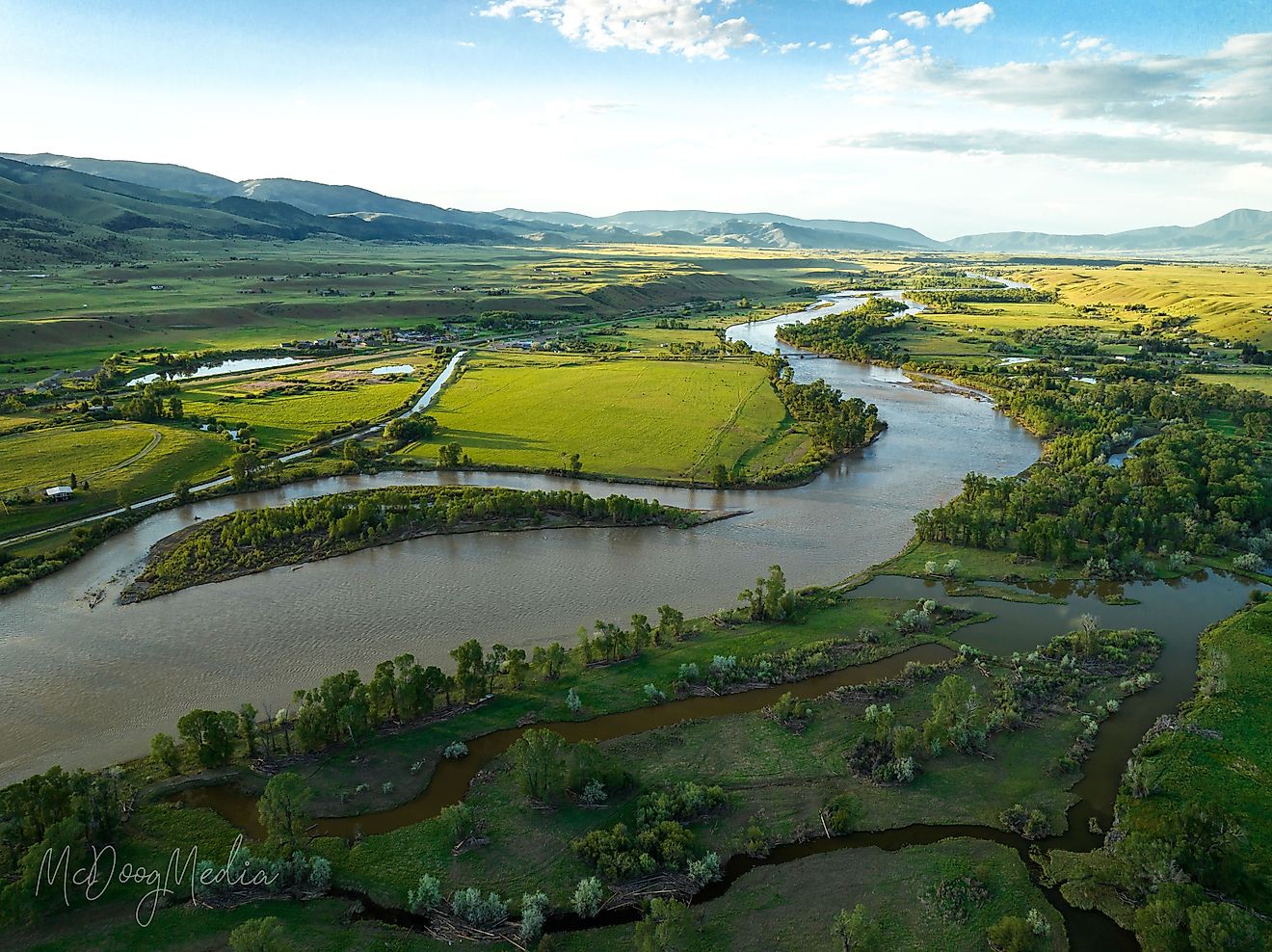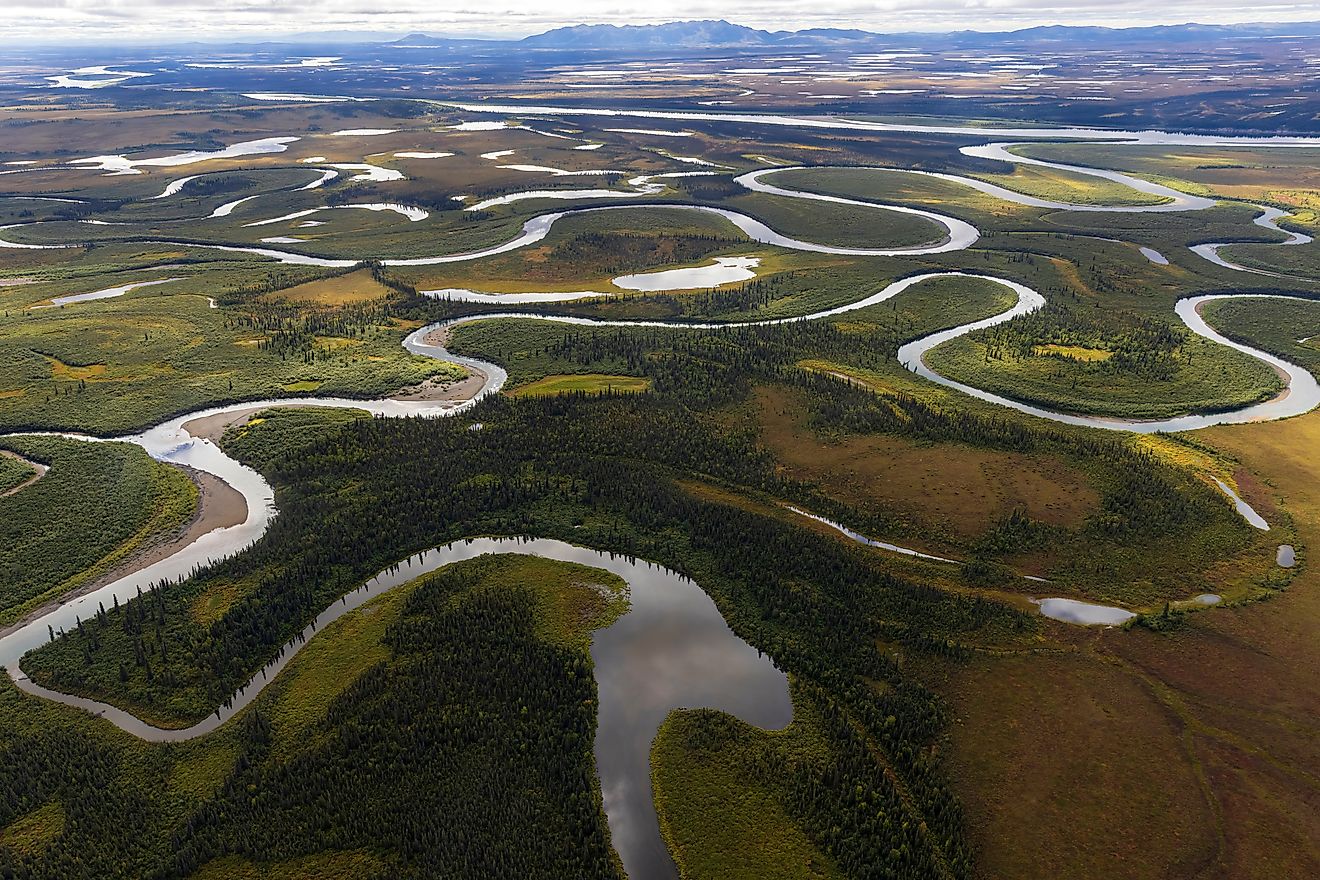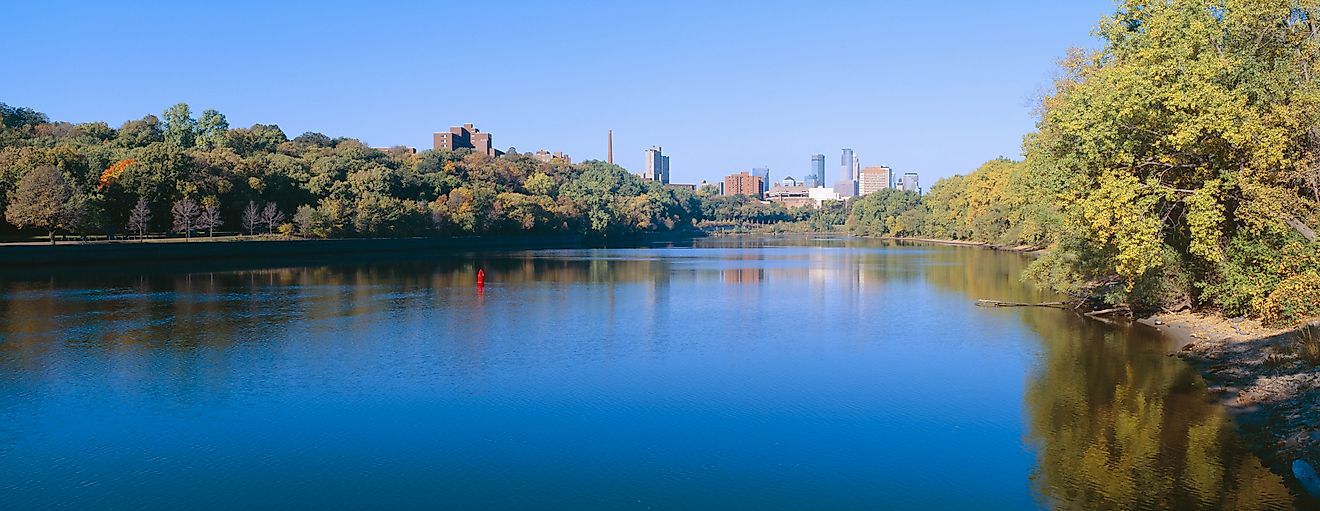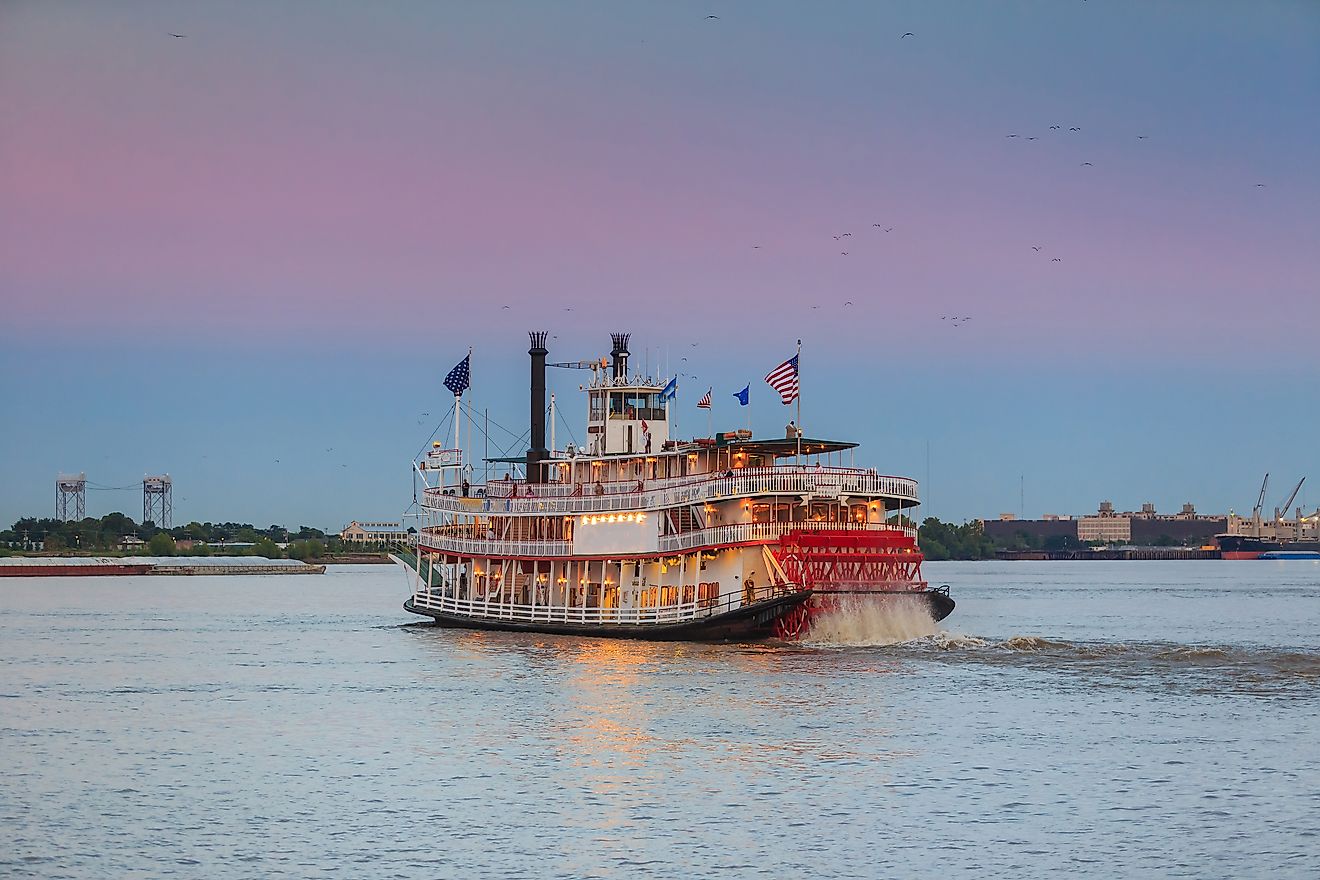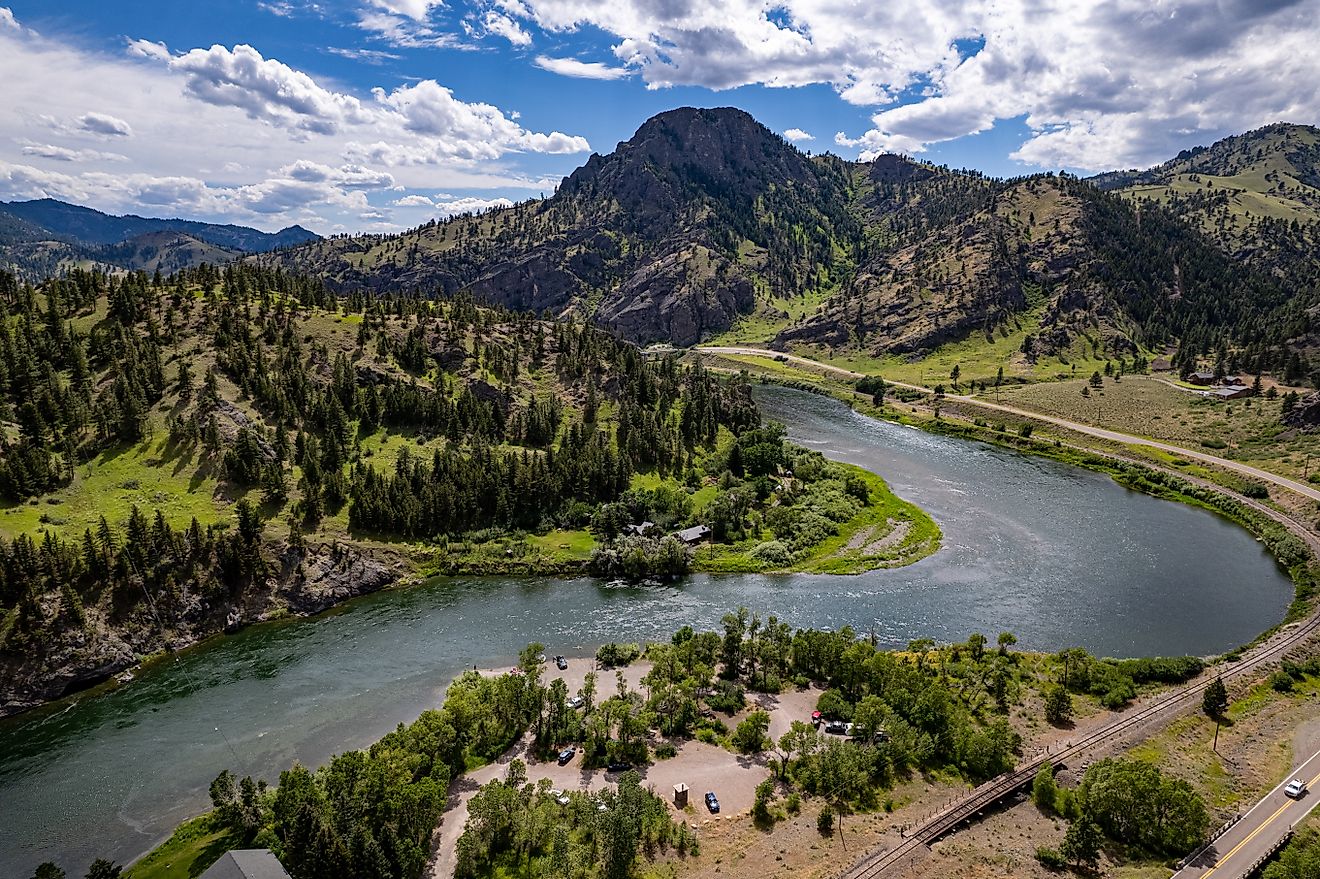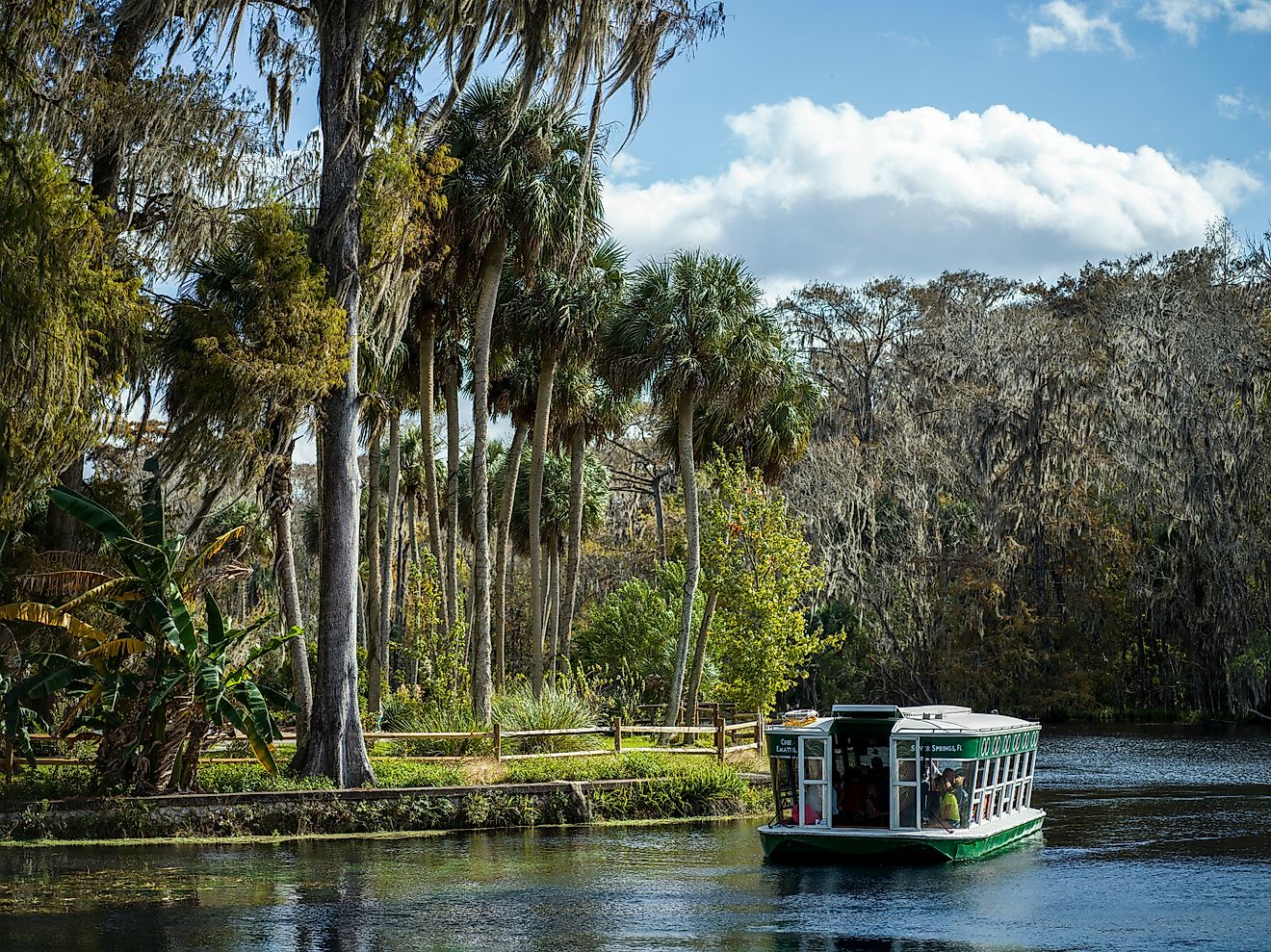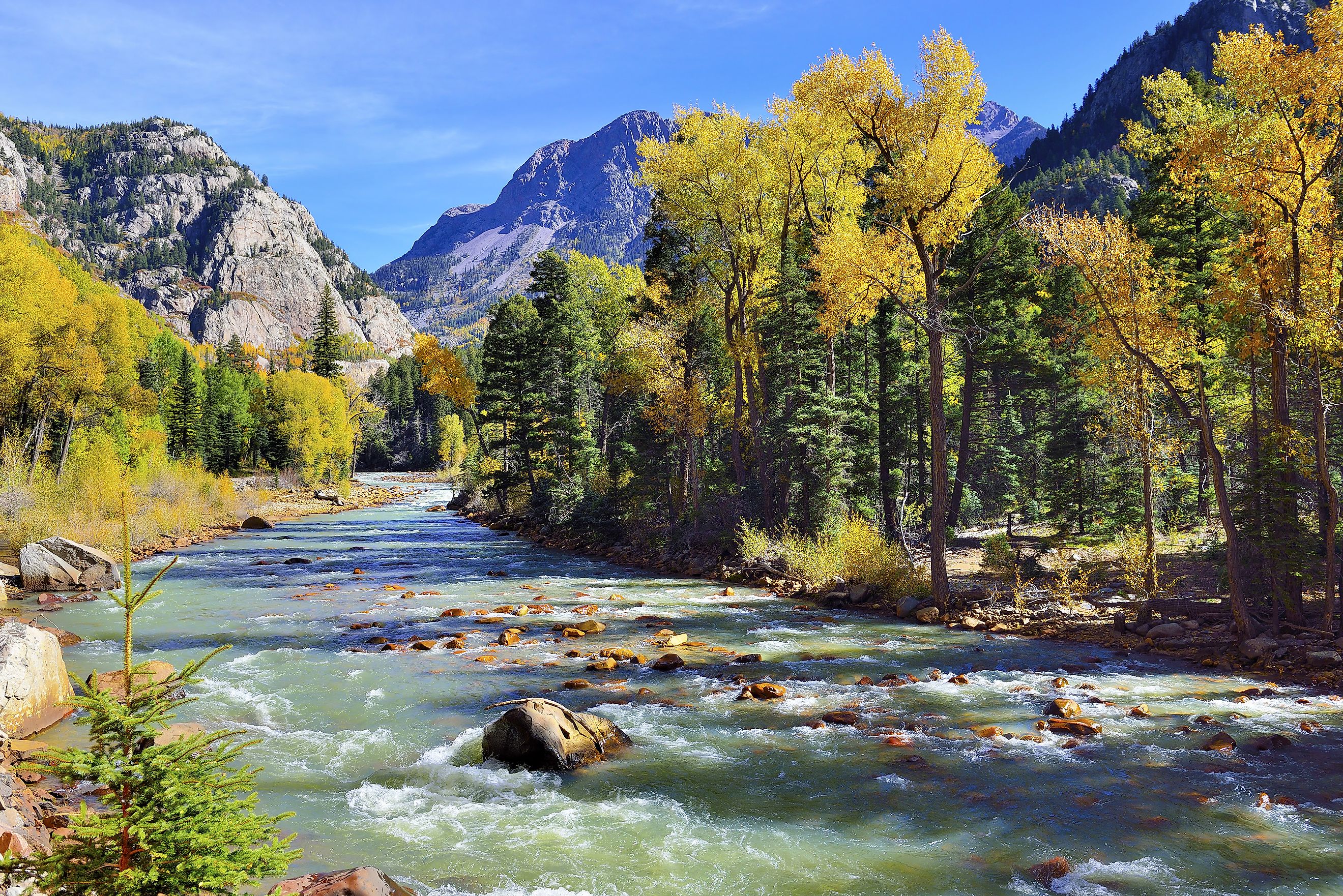
The Fastest Flowing Rivers in the US
Rivers in the United States do more than meander through valleys and farmland. Some charge forward with extraordinary force, carrying immense volumes of water at blistering speeds. They are fast-flowing powerhouses that cut through canyons, fuel hydroelectric dams, shape ecosystems, and demand respect from anyone who navigates their currents.
River speed can be measured in a few ways, most commonly by current velocity or by the volume of water moving through a channel. The fastest flows are often found in rivers with steep gradients, high elevations, snowmelt-fed sources, and narrow, constricted courses that accelerate the current.
Among the nation’s waterways, these rivers stand out for their remarkable combination of speed and power. They don’t just flow—they surge with force, carving landscapes and fueling ecosystems with relentless energy.
Niagara River, New York
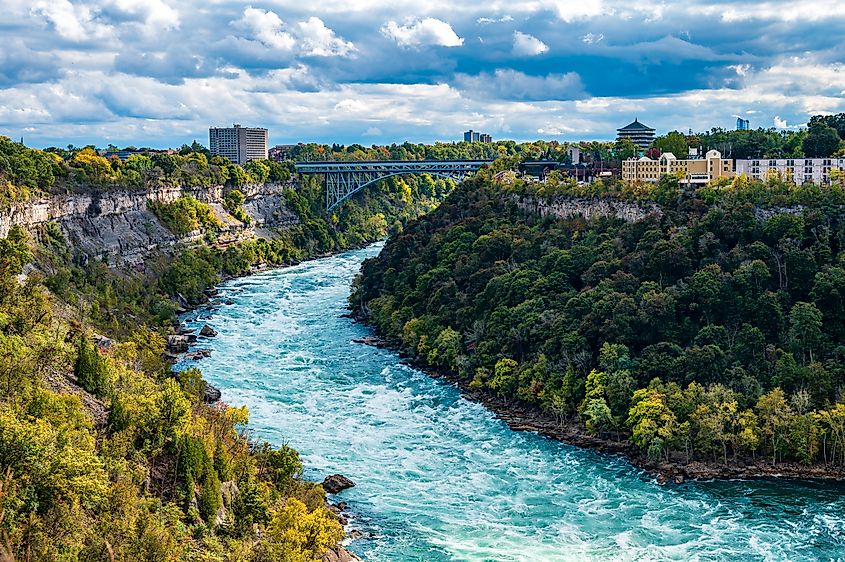
Average Flow Speed: 25 to 30 miles per hour
Average Discharge: 85,000 to 100,000 cubic feet per second
The Niagara River may be short, stretching only 36 miles between Lake Erie and Lake Ontario, but it more than makes up for it in speed and volume. This river carries the combined outflow of four of the Great Lakes and tumbles dramatically over Niagara Falls, where flow rates spike to over 100,000 cubic feet per second.
Downstream of the falls, the Niagara River becomes a narrow gorge with intense rapids and whirlpools. The river's average surface speed can exceed 30 miles per hour in some sections. This incredible speed and volume have made it one of the most utilized sources of hydroelectric power in the country.
Columbia River, Washington and Oregon
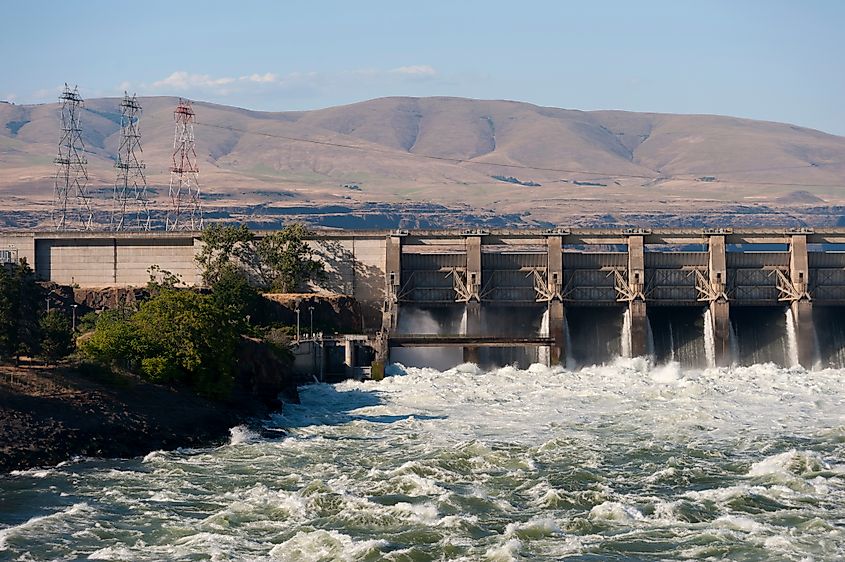
Average Discharge: 265,000 cubic feet per second
Peak Speeds: 8 to 10 miles per hour in narrow sections
The Columbia River is the fourth-largest river in the United States by volume and the fastest by discharge in the Pacific Northwest. Fed by glaciers and snowmelt from the Canadian Rockies, the river charges westward through Washington and forms much of the border with Oregon before emptying into the Pacific Ocean.
Sections of the Columbia River, especially in the Columbia River Gorge, can reach current speeds of 8 to 10 miles per hour due to constriction between canyon walls. Near Bonneville Dam and The Dalles, the river flows fast enough to power massive hydroelectric turbines. In fact, the Columbia River provides nearly half the hydroelectric power consumed in the western US.
Mississippi River, Midwest and South
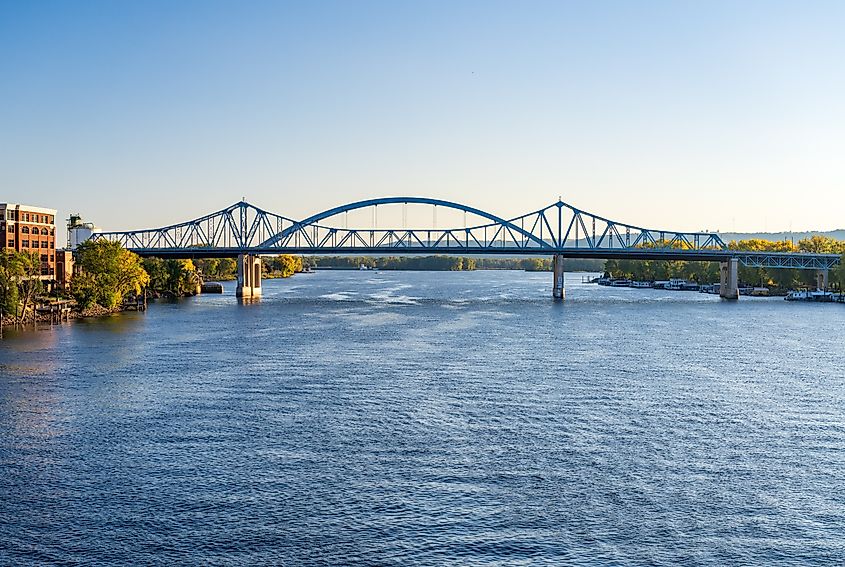
Average Discharge: 593,000 cubic feet per second
Surface Speed: 1.2 to 3 miles per hour (can spike near dams and flood stages)
The Mississippi is not the fastest river in terms of surface speed, but in sheer volume, it dominates. Flowing over 2,300 miles from Minnesota to the Gulf of America, it drains 41 percent of the continental United States.
In areas like the Upper Mississippi near St. Anthony Falls in Minneapolis, or in constricted bends near St. Louis, the river can exceed 3 miles per hour. During flood stages, the river accelerates, and flow rates can surpass 1 million cubic feet per second.
The Mississippi’s speed and volume are powerful enough to reverse flow in some of its tributaries during flood events.
Yukon River, Alaska
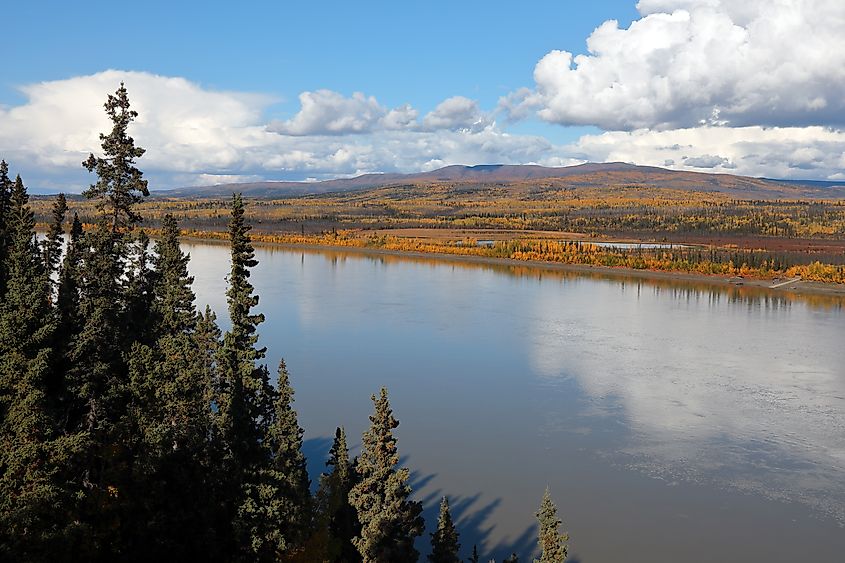
Average Flow Speed: 5 to 7 miles per hour
Average Discharge: 227,000 cubic feet per second
The Yukon River is one of the longest and fastest flowing rivers in North America. Originating in British Columbia, it snakes over 1,980 miles through Canada and Alaska before emptying into the Bering Sea. Its speed is amplified in Alaska, where wide, unobstructed channels and heavy snowmelt create swift currents.
In some narrower sections, such as around Eagle or Tanana, the Yukon reaches 7 miles per hour or more. Its force is capable of transporting entire ice floes during spring breakup, creating spectacular and sometimes dangerous conditions.
Colorado River, Southwest US
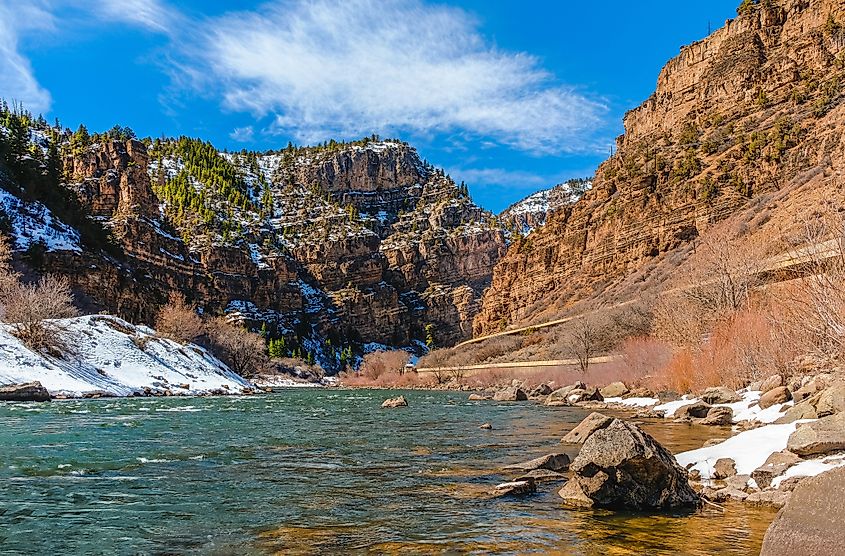
Average Flow Speed: 4 to 7 miles per hour in Grand Canyon
Average Discharge: 15,000 to 22,000 cubic feet per second (controlled)
The Colorado River may not be the largest by volume, but its steep gradient and tight canyon walls make it one of the fastest and most powerful rivers in the American West. From its headwaters in the Rocky Mountains of Colorado, the river cuts through Utah, Arizona, and Nevada, carving out iconic features like the Grand Canyon.
In the Grand Canyon, the river descends over 2,000 feet, producing rapid flows that often reach 7 miles per hour. Whitewater rapids such as Lava Falls and Crystal Rapid are among the most intense commercially rafted rapids in the world.
Despite its speed, the river rarely reaches the sea anymore due to extensive damming and diversion.
Kennebec River, Maine

Average Flow Speed: 7 to 10 miles per hour in The Forks region
Average Discharge: 5,893 cubic feet per second
Though not as large as the Columbia or Mississippi, Maine’s Kennebec River is one of the fastest in terms of current speed. Especially in the Upper Kennebec near The Forks, where it joins the Dead River, the gradient creates a river that surges with energy.
Releases from Harris Station Dam amplify the river’s velocity, providing world-class whitewater rafting. Rapids range from Class III to Class V, with wave trains and hydraulic drops that test even seasoned paddlers.
The Kennebec River was once a key logging route and now fuels both recreation and hydropower in Maine.
Klamath River, Oregon and California

Average Flow Speed: 5 to 8 miles per hour
Average Discharge: 16,000 cubic feet per second (variable)
The Klamath River originates from the high desert of southern Oregon and flows southwest into northern California. Though relatively short at 263 miles, it descends rapidly, with sharp gradients and narrow valleys that produce fast currents.
As it approaches the coast near Klamath, California, the river’s speed remains strong due to elevation drop and consistent seasonal snowmelt. The Klamath has been a major salmon fishery and is culturally significant to Indigenous tribes like the Yurok and Karuk.
The Klamath is also the site of one of the largest dam removal projects in US history, aimed at restoring native fish populations and natural flow speeds.
Speed vs Volume: How to Measure “Fast”
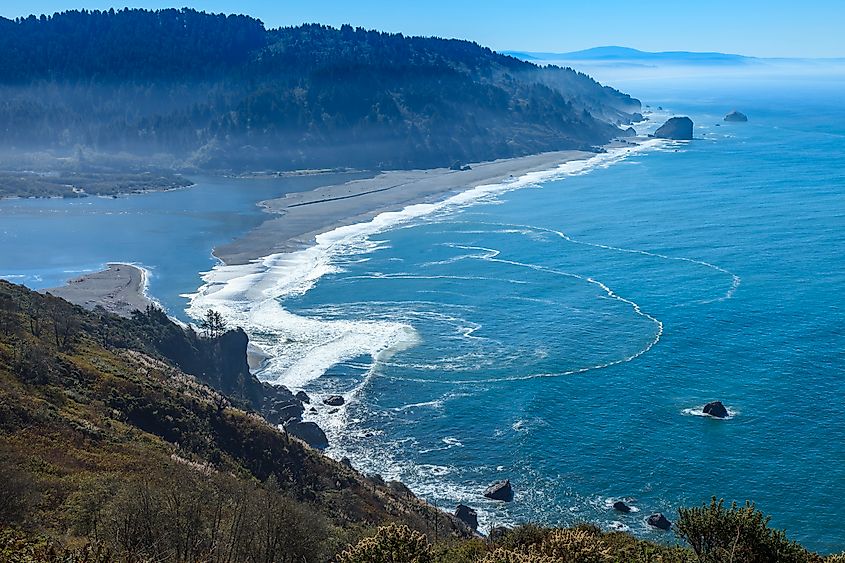
In hydrology, river speed is typically measured in:
-
Feet per second (ft/s) or
-
Miles per hour (mph)
But another measure, discharge, tells us how much water is flowing. A river with moderate speed and enormous volume, like the Mississippi, can still move with extraordinary power. On the other hand, a narrow mountain river might have a higher current speed but much less water overall.
For this list, the fastest rivers are determined by a combination of:
-
Average flow speed in mph or ft/s
-
Volume of discharge (cubic feet per second)
-
Gradient and channel constriction
Together, these factors explain why a short river like the Niagara can top the list, while longer, slower-moving rivers like the Ohio or Potomac do not.
A Nation in Motion
The rivers that flow swiftly across the United States are not just scenic attractions. They are vital arteries of energy, culture, and commerce. Their force powers cities, irrigates farmlands, and inspires awe in those who raft, fish, or hike along their banks.
Understanding which rivers move the fastest reveals much about the topography and climate of the regions they flow through. It also reminds us of how much natural power is still at work across the American landscape.
Whether hurtling through a gorge or churning below a major dam, these rivers remain among the most dynamic features of the natural world—and they are moving fast.
The 7 Fastest Flowing Rivers in the US
| River | Avg. Speed (mph) | Avg. Discharge (cfs) | Notable Region | Fast Fact |
|---|---|---|---|---|
| Niagara River | 25–30 | 85,000–100,000 | New York/Ontario Border | Home to North America's most powerful waterfall |
| Columbia River | 8–10 | 265,000 | Washington/Oregon | Largest hydroelectric producer in the western US |
| Mississippi River | 1.2–3 (floods 6+) | 593,000 | Central US | Drains over 40% of the continental US |
| Yukon River | 5–7 | 227,000 | Alaska | Ice breakups in spring can move entire sheets downstream |
| Colorado River | 4–7 | 15,000–22,000 | Grand Canyon, AZ | Carved the Grand Canyon with its relentless flow |
| Kennebec River | 7–10 | 5,893 | Maine | Known for Class V rapids and steep gradients |
| Klamath River | 5–8 | 16,000 | Oregon/California | Part of the largest dam removal project in the US |
